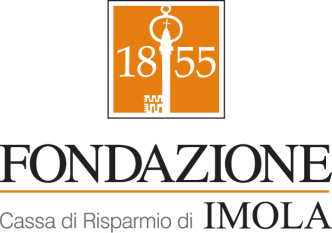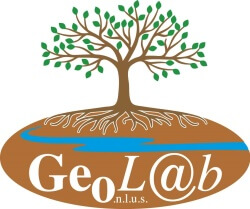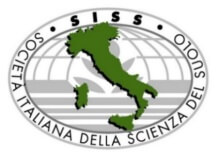Value recovery from plastic wastes via biodegradation of low-density polyethylene by Aspergillus, Proteus and Serratia species
DOI:
https://doi.org/10.60923/issn.2281-4485/22737Keywords:
biodegradation, polyethylene, industrial chemicals, microorganisms, value recoveryAbstract
Daily production and release of enormous quantities of plastic wastes into the environment are on the increase. Being recalcitrant to degradation, they are known to constitute a waste burden to cities and municipalities as they accumulate in the different environmental media. The search of remedies for plastic accumulation and pollution of our Environment and the possibility of recovering value from plastic wastes via the biodegradation potentials of indigenous microorganisms prompted this research work. Using standard microbiological techniques, 3 microorganisms, Aspergillus sydowii, Proteus vulgaris and Serratia marcescens were isolated from different dumpsites in Owerri West Local Government Areas (LGA), Imo State, Nigeria. Incubation of shredded and ground low-density polyethylene sachets with the test isolates was done in mineral salts vitamin medium(MSVM) for 60 days, and their ability to degrade the polyethylene was evaluated using visible spectrophotometer (OD600), fourier transform infra-red spectroscopy (FTIR) and gas chromatography-mass spectrometry (GC-MS) techniques. Results obtained indicated increase in optical densities (OD600) in the media inoculated with the test isolates: A. sydowii, (0.12 – 0.80), P.vulgaris (0.11- 0.71) and S.marcescens (0.10- 0.69), while the control sample without microbial inoculation remained unchanged. Similarly, the number of functional groups and compounds eluted was low in the control sample (8 and 11), but increased and differed in the three organisms: A.sydowii (11 and 44), P. vulgaris (14 and 48) and S. marcescens (12 and 38) respectively, indicating that the organisms exhibited varying degrees of competence in polyethylene degradation. It was concluded that Indigenous microorganisms were able to degrade low-density polyethylene, and that biodegradation of polyethylene resulted in the release of a variety of chemical compounds with great potentials applicability in various industries. The reactions involved in this biodegradation could be further studied and optimized as a waste-to-wealth strategy towards sustainable environmental management.
References
ASM-American Society of Microbiology (2020) Identifying bacteria through look, growth, stain and strain. Retrieved. 14: http://www.asm.org/article
AZEKO S.T., ETU-UDO G.A., ODUSANYA O.S. MA-LATESTA K., ANUKU N., SOBOYEJO W.O. (2015) Biodegradation of linear low density polyethylene by Serratia marcescens subsp. marcescens and its cell free waste extracts. Biomas Valor, 6:1047-1057. https://doi.org/10.1007/S12649-015-9421-0
AZIZA A., FAIRUS S., SAARI (2024) Isolation and charac-terization of polyethylene and polyethylene teraphthalate-degrading bacteria from Jakarta, Indonesia. The Open Biotechnology Journal, 18:e187400787280343. http://dx.doi.org/10.2174/0118740707280343231208102253
BARDAJI D.K.R., FURLAN J.P.R., SHEHLING E.G. (2019) Isolation of a polyethylene degrading paenibacillius sp. from a landfill in Brazil. Archives of Microbiology, 201: 699-704. https://doi.org/10.1007/S00203-019-01637-3
BEAL J., FANNY N.G., HADDOCK-ANGEL T., (2020) Robust estimation of bacterial call count from optical density. Communications Biology Journal, 3:152. https://doi.org/10.1038/542003-020-01127-5.
BHARDWAJ H., GUPTA R., TIWARI A. (2012) Microbial Population associated with plastic degradation. Open Access Scientific Reports, 1(5): 272-274. http://dx.doi.org/10.4172/scientificreport.272
BIKI S.P., MAHMUD S., AKHTER S., RAHMAN M.J., RIX J.J., AL BACHCHU M.A., AHMED N. (2021) Polye- thylene degradation by Ralstonia sp. strain SKM2 and Bacilliussp strain SMI isolated from landfill soil site. Environmental Technology and Innovation, 22:11 http://doi.10.1016/j.eti.2021.101851
BRANDSON A.M., GARCIA A.M., KHLYSTOV N.A., WU W.M., . CRIDDLE C.S. (2021) Enhanced bioavailability and degradation of polystyrene in an enrichment derived from the gut microbiome of Tenebrio molitor(meal worm larva). Environmental Science and Technology, 53(3): 2027 – 2036. https://doi.org/10.1021/ace.est.0c04952
CHAMAS A., MOON H., ZENG J.J., QUI Y., TABAS-SUM T., JANG J.H., ABU-OMAR M., SCOTT S.L., SUH S. (2020) Degradation rates of plastic in the environ-ment. ACS Sustainable Chemistry and Engineering, 8:3494-3511. https://doi.org/10.1021/acssuschememg.9b06635
CHEESBROUGH M. (2006) Biochemical tests to identify bacteria. In: Cheesbrough M. (ed). District laboratory practice in tropical countries, part 2, 2nd Edition. Cambridge University Press, UK, pp 62-70.
CHEN M., LIU Z., JIANA S., HOU H. (2020) A feasible route for reutilization of plastic wastes. Science of Total Environment, 710. https://doi.org/10.1016/J.SCITOTENV.2020.136256
DEVI D., GUPTA K.K., CHANDRA H., SHARMA K.K., SAGA K., MORI E., MALA DE FARIA T. (2023) Biode-gradation of low-density polyethylene (LDPE) through application of indigenous strain Alicalinenes faecalis ISJ128. Environmental Geochemistry and Health, 45(12):9391-9401. https://doi.org/10.1007/s10652-023-01590-z.
EBCIBA C., GNANAMANI A. (2020). Detailed studies on microbial adhesion and degradation of polystyrene foam waste (PSFW) for clean environment. Environmental Science and Pollution Research, 27(35):44257 – 44266.
ELSAMAHY T, SUN J., ELSILK E., ALI S. (2023) Biode-gradation of low-density polyethylene plastic by a con-structed tri-culture yeast consortium from wood-feeding termite: degradation mechanism and pathway. Journal of Hazardous materials, 448. http://doi.org/10.1016/j.jhazmat.2022.129913.
EMMANUEL-AKERELE H.A., AKINYEMI P.O. IGBO-GBO- EKPUNOBI O.E. (2022) Isolation and Identification of Plastic Degrading Bacteria from Dumpsites – Lagos. Advances in Environmental Technology, 1:59 – 71. https://doi.org/10.22104/AET.2020.5268.1428
GILAN I., HADAR Y., SIVAN A. (2004) Colonization, biofilm formation and biodegradation of polyethylene by a strain of Rhodococcusrubber. Applied Microbiology and Biotechnology, 65: 97- 104. https://doi.org/10.1007/500253-004-1584-8
HADAD D., GERESH S., SWAN A. (2005) Biodegradation of polyethyelene by the thermophilic bacterium Brevibacillus borstelensis. Journal of Applied Microbiology, 98: 1093-1100. https://doi.org/10.1111/j.1365-2672- 2005.02553.x
HALDEN, R. U. (2010). Plastic and Health Risks. Annual Review of Public Health. 31, 179 – 194
JAINA A., PANIGRAHY S.S., DONGRE N., JAIN P. (2023) Isolation and Characterization of Plastic-Degrading Bacteria from the soil. Scope, 13(4):838-842. https://7d17c-838- 842.202317754
KHAN K.B., ARSHAN M.M.K., AKRAM A.S., JAFFER, A.H.A. (2018) Ccomparative study on DNA extraction methods for PCR amplification of COI gene from ascidians in Indian coast. International Journal of Zoology Studies, 3(2):132-134
KIM H.R., LEE H.M., YU H.C., JEON E., LEE S., LI J., KIM D.H (2020) Biodegradation of polyethylene by Pseudomona sp. isolated from the gut of superworms (larvae of Zophobasatratus). Environmental Science and Technology, 54(11):6987-6996.
KOPECKA R., KUBINOVA I., SOVOVA K., MRAVCO-VA L., VITEZ T., VITEZOVA M. (2022) Microbial degra-dation of virgin polyethylene by bacteria isolated from a landfill site. SN Applied Sciences, 4:302-312. https://doi.org/10.1007/s42452-022-05182-x
LIN Z., JIN T., ZOU T., XU L., XI B., XU D., HE J.(2022) Current Process on Plastic/Microplastic Degradation: Fact influences and mechanism. Environmental Pollution, 304: 119-159. https://doi.org/10.1016/j.envpol.2022.119159
LONGO C., SAVARIS M., ZENI M., NICHELE R.B., COULON GRISA A.M. (2011) Degradation study of polypropylene (PP) and bioriented polypropylene (BOPP) in the environment. Materials Research, 14(4). http://dx.doi.org/10.1590/51516-14392011005000080
MOHAN S.K., SURESH B. (2015) Studies on biodegrada-tion of plastics by Aspergillus spp. Isolated from dye effluent enriched soil. Indo America Journal of Pharmaceutical Science, 2(12): 1636-1639.
MOHANRAY C., SENTHILKUMAR T., CHANDRODE-KAR M. (2017) A review on conversion techniques of liquid fuel from waste plastics. International Journal of Energy Resources, 41:1534 – 1552.
MONTEIRO R.C.P., IVA DO SUL J.A., COSTA M.F., (2018) Plastic Pollution in Island of the Atlantic Ocean. Environmental Pollution, 3238:103-110.
NAG M., LAHIRI D., DUTTA B., JADAV G., RAY R.R. (2021) Biodegradation of used polyethylene bags by a new marine strain of Alcaligenes faecalis LNDR-1. Environmental Science Pollution Research International, 28(30):41365-41379. https://doi.org/10.1007/S11356-021-13704-0
NI Z., MINGZHU D., YINGJIN Y. (2022) Current Advan-ces in Biodegradation of polyolefins. Microorganisms, 10(8), 1537. https://doi.org/10.3390/microorganisms.100081537
NOVOTNY C., MALACHOVA K., ADAMUS G., KWIE-DIEN M., LOTTI N., SOCCIO M., VERNEY V., FAVA F. (2018) Deteriotaion of irradiation/high-temperature pretreated Linear Low-Density PE (LLDPE) by Bacillius amyloli-que faciens. International Journal of Biodegradation, 132:259-267. https://doi.org/10.1016/j.ibiod.2018.04.014
OGBULIE T.E., NWAKANMA C. (2015) Essential analyti-cal methods in biotechnology. Unique Books Publisher, Nigeria. pp. 63-89.
PATIL R., BAGDE U.S. (2015). Enrichment and isolation of microbial strains degrading bioplastic polyvinyl alcohol and time course study of their degradation potential. African Journal of Biotechnology. 14(27): 2216-2226. https://doi.org/10.5897/AJB2011.3980
PRAJAPATI R., KHOLI K., MAITY S., SHARMA B.K (2021). Potential chemicals from plastics waste. Molecules, 26(11):3175. https://doi.org/10.3390/molecules26113175
REN L., MEN L., ZHANG Z., GUAN F., TIAN J., WANG B., WANG J., ZHANG Y., ZANG W. (2019) Biodegradation of Polyethylene by Enterobacter sp. D1 from the Gut of Wax Moth Galleria mellonella. International Journal of Environmental Research and Public Health,16:1941. https://doi.org/10.3390/ijerph16111941
SKARIYACHAN S., SETTUR A.S., NAIK S.Y., NARK A.A, USHARAN M., VASIST K.S. (2017) Enhanced biode-gradation of low and high-density PE by novel bacterial consortium formulated from plastic contaminated cow dung under thermophiolic conditions. Environmental Science and Pollution Research, 24:8443-8457. https://doi.org/10.1007/s11356-017-85370
UWAKWE F.E., EZEJIOFOR T.I.N., OGBULIE T.E., ANYALOGBU E.A.A., OKAFOR S.A. (2023) Investigating the biodegradation of low-density Polyethylene by Proteus and Serratia Spp. Engineering and Technology Journal, 8(3): 2052– 2055. https://doi.org/I:10.4719/etj/v8i3.08
UWAKWE F.E., EZEJIOFOR T.I.N., OGBULIE T.E., ANYALOGBU E.A.A. (2023) A Comparative study of biodegradation of low-density Polyethylene by Proteus and Lactobacillus Spp. International Journal of Advanced Research in Biological Sciences, 10(7): 93 – 102. https://doi.org/10.1007/s42770-024-01487-8
UWAKWE F,E., EZEJIOFOR T.I.N., ANYALOGBU E.A.A., OGBULIE T.E. (2025) The biodegradation of low-density Polyethylene by Bacillus Species. EQA-International Journal of Environmental Quality, 67:26–35. https://doi.org/10.6092/issn.2281-4485/20474
YOON M.G., JEON H.J., KIM M.N. (2012) Biodegrada-tion of polyethylene by a soil bacterium and alkb cloned recombinant cell. Journal of Bioremediation and Biodegradation, 3(145).
https://doi.org/10.4172/2155-6199-1000145
ZHANG Y., PENDERSON J.N., ESER B.E., GUO Z.(2022) Biodegradation of polyethylene and polystyrene: From microbialdeteroriation to enzyme discovery. Journal of Biotechnology Advances, 60:107991. https:/doi.org/10.1016/j.biotechadv.2022.107991
Downloads
Published
How to Cite
Issue
Section
License
Copyright (c) 2026 Felicia E. Uwakwe, Ernest A.A. Anyalogbu, Assumpta U. Ugenyi, Onyenonachi C. Ihejirika, Chikaodi C. Obiefula, Martin C. Opara, Toochukwu E. Ogbulie

This work is licensed under a Creative Commons Attribution 4.0 International License.









